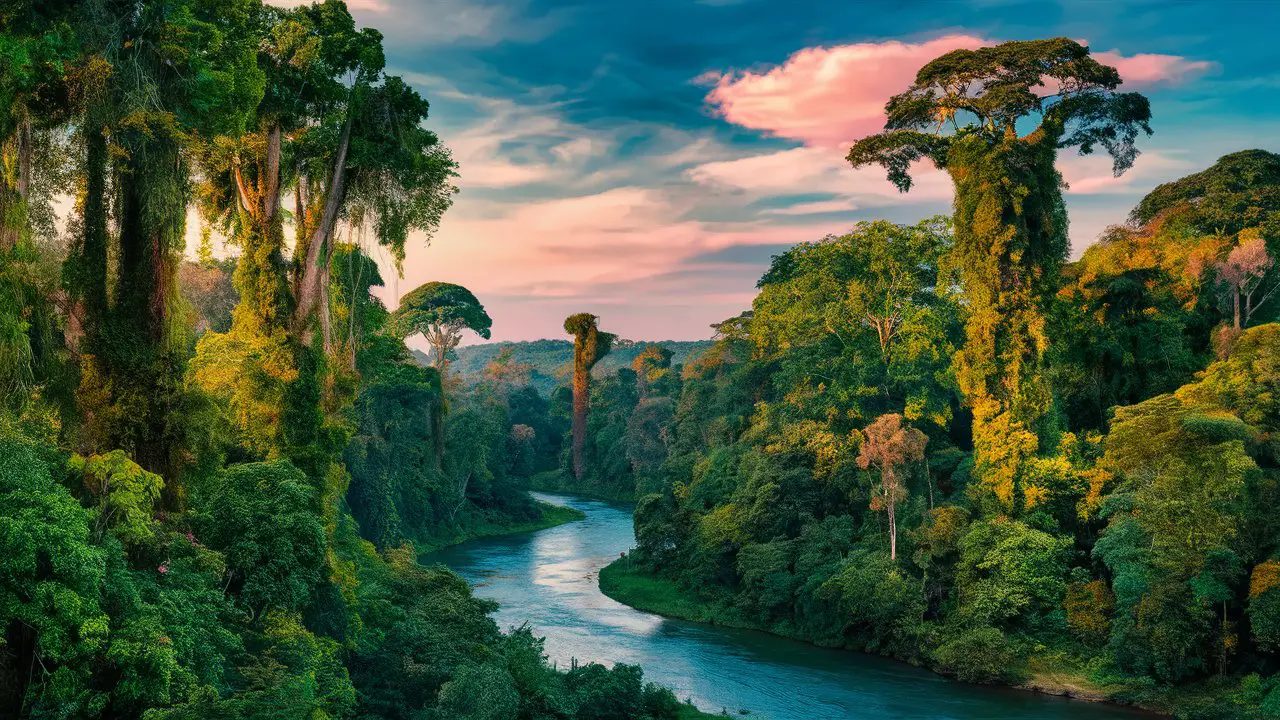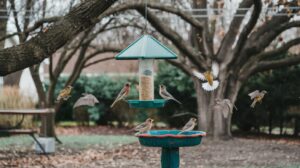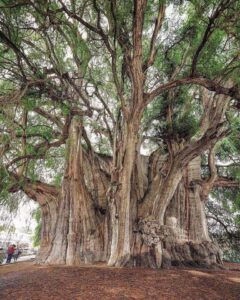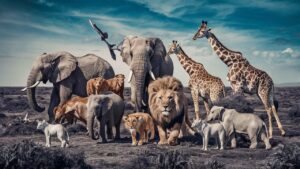As an inquisitive reader interested in learning new things, you will appreciate discovering fascinating tidbits about the lush Amazon rainforest. This article shares little-known facts that will pique your curiosity about the intricate ecosystems that thrive in Earth’s largest tropical forest. Delving into details about the Amazon’s biodiversity, climate, and indigenous cultures will expand your knowledge about this wondrous region. Prepare to be amazed as you uncover interesting insights into the magnificent flora and fauna inhabiting the Amazon basin. Reading this piece provides an opportunity to gain awareness about an environment that is crucial to global ecology. Let your sense of wonder grow as you learn intriguing trivia regarding one of the most spectacular natural places on our planet.
Overview of the Amazon Rainforest
Location and Size
The Amazon Rainforest is located in South America, encompassing areas in Brazil, Peru, Colombia, Venezuela, Ecuador, Bolivia, Guyana, Suriname, and French Guiana. It is the largest tropical rainforest in the world, covering over 5.5 million square kilometers.
Biodiversity
The Amazon Rainforest is home to the vast majority of Earth’s plant and animal species. It contains over 10% of the world’s known species, including over 40,000 plant species, 1,300 bird species, 3,000 types of fish, 430 species of mammals, and 2.5 million species of insects. Some of the animals found in the Amazon include jaguars, toucans, macaws, anacondas, piranhas, sloths, river dolphins, and electric eels.
Indigenous Tribes
There are over 400 indigenous tribes currently living in the Amazon Rainforest, speaking over 300 different languages. Some of the largest tribes include the Yanomami, Matis, Kayapó, and Ticuna tribes. These tribes have inhabited the rainforest for thousands of years, relying on the land for resources and living in harmony with the natural environment. However, encroaching development is threatening their traditional way of life.
Deforestation and Threats
The Amazon Rainforest has been under severe threat from deforestation, mining, logging, and pollution. Vast areas of rainforest are being cleared for agricultural use, including cattle ranching and palm oil plantations. Mining for resources like gold, aluminum, and iron ore has also damaged parts of the rainforest. Logging of valuable hardwood trees is depleting the rainforest and harming biodiversity. Pollution from mining and development threatens the health of the rainforest and all the species that inhabit it. Urgent action needs to be taken to curb these threats and protect this vital ecosystem.
Biodiversity Abounds in the Amazon Rainforest
The Amazon rainforest is home to an incredible diversity of plant and animal life. ###Flora The rainforest contains over 40,000 plant species, many of which have medicinal properties that scientists have not yet discovered. The canopy, formed by treetops over 150 feet high, contains the majority of the biodiversity. Epiphytes like orchids and bromeliads cling to the branches, soaking in sunlight.
Fauna
The Amazon rainforest harbors over 400 mammal species, 1,300 bird species, 3,000 fish species, and 2.5 million insect species. Some of the more well-known animals include jaguars, toucans, anacondas, and piranhas. Many species remain undiscovered, especially insects and amphibians. The rainforest contains a complex food web, with animals at every level of the chain.
Interdependence
The biodiversity of the rainforest depends on the interdependence of the species within it. As the climate continues to change, many species must adapt quickly to survive. Deforestation also poses a threat, as it destroys habitats and disrupts the food chain. Protecting the Amazon rainforest is crucial to preserving its unparalleled biodiversity and maintaining ecological balance.
The Amazon rainforest’s biodiversity makes it one of the most important ecosystems on the planet. Its diverse flora and fauna have developed complex relationships over time, relationships which humanity has only begun to understand. Safeguarding this “lungs of the planet” must be a priority to secure the health of our shared world.
Indigenous Tribes of the Amazon Rainforest
The Amazon Rainforest is home to over 350 indigenous tribes, each with a unique culture, language, and spiritual tradition. Some of the largest tribes include the Yanomami, the Huaorani, the Cinta Larga, and the Ticuna.
The Yanomami
The Yanomami tribe lives in the northern regions of the Amazon, near the border of Venezuela and Brazil. They are hunter-gatherers who rely on the rainforest for food and shelter. The Yanomami live in large communal houses called yanos or shabonos. They believe that the natural world is inhabited by spirits, and their spiritual tradition focuses on maintaining a balance with the forest.
The Huaorani
The Huaorani tribe, also known as the Waorani, live in the eastern region of the Ecuadorian Amazon. They were traditionally hunter-gatherers and live in small nomadic bands. The Huaorani are known for their hunting skills and make blowguns and spears to hunt monkeys, birds, and other small game. Their culture is animistic, believing that spirits inhabit natural objects like trees, rivers, and animals.
The Cinta Larga
The Cinta Larga or “Broad Belt” tribe lives in the southwestern region of the Amazon in Brazil. They traditionally lived as hunter-gatherers in the rainforest but were displaced from their lands and now live on indigenous reserves. The Cinta Larga are known for their distinctive traditional dress, especially the woven belts they wear. They rely heavily on manioc, wild fruits, fish, and game for sustenance. The Cinta Larga practice shamanism and believe that spirits inhabit the natural world.
The Ticuna
The Ticuna are the largest indigenous tribe in the Brazilian Amazon, with a population of over 40,000. They live along the Solimões River in Brazil, Peru, and Colombia. The Ticuna traditionally lived in large villages and cultivated manioc, maize, and tropical fruits. They are skilled artisans who make pottery, baskets, and woven fabrics. The Ticuna believe in animism and practice shamanism, especially the use of ayahuasca in spiritual rituals.
The indigenous tribes of the Amazon have lived in harmony with the rainforest for centuries and have a wealth of knowledge about sustainable living and natural medicine. Protecting their lands and cultures is key to preserving the diversity of the Amazon.
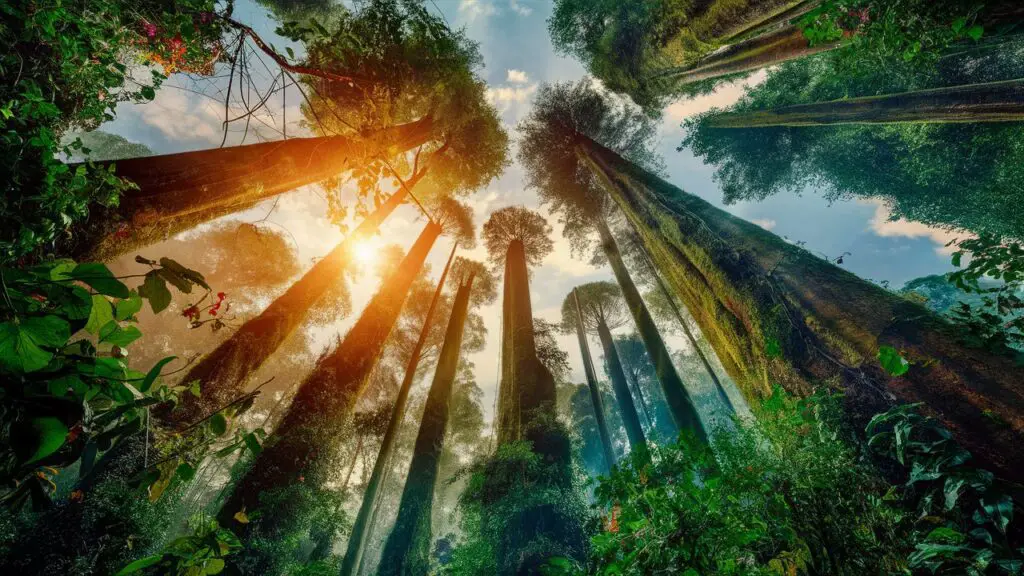
Threats Facing the Amazon Rainforest
Deforestation
The greatest threat to the Amazon rainforest is deforestation for agricultural use. Trees are being cleared at an alarming rate to make way for cattle ranching and crop cultivation. According to recent studies, deforestation in the Amazon has accelerated by nearly 30% in the past year due to fires and land clearing. This destruction of habitat poses a grave threat to the incredible biodiversity of plants and animals that inhabit the region.
Mining Activities
Mining for precious metals and minerals is another threat facing the Amazon rainforest. Mining leads to soil erosion and pollution of waterways from toxic runoff. Mercury used in gold mining also enters the food chain and contaminates fish, a major source of food for indigenous communities. The demand for metals and minerals around the world is driving many mining companies to exploit the natural resources of the Amazon.
Infrastructure Projects
The construction of roads, dams, and other infrastructure in the Amazon rainforest opens up previously inaccessible areas to deforestation and human activity. For example, there are plans to pave highways that cut through the heart of the Amazon and dams that would flood hundreds of square miles of rainforest. While proponents argue these projects support economic growth, they also make it much easier for loggers and miners to access and exploit the forest.
Climate Change
Although the Amazon rainforest absorbs a significant amount of the world’s carbon dioxide, the threats of deforestation, forest fires, and drought are weakening its ability to act as a carbon sink. As the forest is degraded, it releases carbon back into the atmosphere and contributes to global warming. A vicious cycle ensues, as a warming climate makes the rainforest more prone to drought and wildfires. Urgent action is needed to curb climate change and protect the Amazon, which is vital for regulating the Earth’s climate.
The future of the Amazon rainforest remains uncertain without global efforts to recognize its immense ecological value and curb the human activities that threaten its existence. By protecting the Amazon, we safeguard a global treasure that sustains life on Earth.
Interesting Facts About Amazon Rainforest: 10 Things You Didn’t Know
###1. The Amazon rainforest produces a significant amount of the world’s oxygen. The Amazon rainforest is often called the “Lungs of the Planet” because it produces more than 20% of the world’s oxygen through photosynthesis. The massive forest absorbs carbon dioxide and releases oxygen back into the atmosphere. However, deforestation poses a threat to this process.
2. The Amazon rainforest is home to the largest species of plants and animals on Earth.
The Amazon rainforest contains the largest collection of living plants and animal species in the world. It is home to over 40,000 plant species, 1,294 bird species, 2.5 million insect species, and over 400 mammal species. Many species still remain undiscovered.
3. The Amazon River is the largest river in the world by volume of water.
The Amazon River flows through the middle of the rainforest and is the largest river in the world by volume. It accounts for approximately 1/5 of the world’s total river flow into the oceans. The massive river is home to many species of plants, animals, and aquatic life.
4. Deforestation of the Amazon rainforest could significantly impact global climate change.
Deforestation is clearing large portions of the forest for agricultural use, logging, mining or other economic activities. Since 1970, over 750,000 square kilometers of the Amazon rainforest have been destroyed. Deforestation contributes to loss of habitat for millions of species and also impacts climate change. The rainforest acts as a carbon sink by absorbing carbon dioxide. When trees are burned or decay, carbon dioxide is released back into the atmosphere, contributing to global warming.
5. Many indigenous tribes inhabit the Amazon rainforest.
The Amazon rainforest is also home to many indigenous tribes, some of which remain uncontacted. Estimates indicate there are about 1 million indigenous people from up to 400 different tribes inhabiting the Amazon rainforest. These tribes have lived sustainably in the forest for thousands of years but now face threats from deforestation and disease.
Conclusion
In closing, you have read through a summary of several fascinating facts about the Amazon rainforest. The incredible biodiversity, including a vast array of plant and animal species, is truly astonishing. The Amazon’s far-reaching impact as the world’s largest rainforest cannot be overstated, from its role in regulating climate to its importance for scientific discoveries. With expanded awareness and understanding of this magnificent ecosystem, we all have an opportunity to appreciate its significance and support thoughtful, sustainable policies to protect this natural wonder for generations to come. By learning more about the rainforest’s ecology and its interconnections globally, we may continue to unlock its secrets while safeguarding its future.
Don’t Miss a Thing! Enhance Your Wildlife Photography with Ultra-X Night Vision Goggles.
GET NOW!


